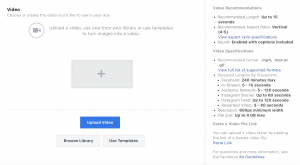More and more organizations and industries are using Big Data to make smart, data-driven decisions. Sustainability is no exception, but how much are you measuring when it comes to your employee sustainability programs?
If you’re just transforming your employee sustainability program to be more data-driven, take a look at these five essential building blocks in order to create a successful data-driven program.
- Know your data’s purpose. Collecting large amounts of data takes a lot of time, effort, and resources, but will lead to little reward without an end goal in mind. Think about why you want to implement, or shift to, a data-driven employee sustainability program? Maybe you want to understand what types of causes resonate with your employees the most, or you want to increase participation in existing sustainability programs. Establishing goals at the start will help guide your data strategy.
- Make S.M.A.R.T goals. Once you’ve come to a consensus on the purpose of collecting and analyzing data, you need to chart your path by setting goals. We like the SMART goal philosophy because it forces you to create quantifiable and realistic goals. These goals will also help you narrow your focus on the data that you need to collect in order to measure success. If your goal is to have a 40 percent open rate on employee sustainability program communications, you know that open rates are where to put that focus.
- Take the time to benchmark. You may be eager to jump into data collection and reporting, but one of the first steps is to create your baseline. In order to measure improvements and change, it’s vital to know where you’re starting. Look at past data to analyze trends and standards in order to establish your baseline. With that understanding, you can move forward with seeing how various decisions and changes affect your sustainability programs.
- The more data, the better the insights. Now that you can start to collect data, focus your efforts on the areas where you can easily collect a high volume of data. The more data you have to analyze, the easier it will be to gain insights and make decisions with it. If there are vital pieces of information that you want to begin to analyze but don’t have enough data, look into services and tools that can help bolster your reporting.
- Identify and test variables. The greatest value that a data-driven employee sustainability program creates is the ability to quickly test and measure new ideas. Are you trying to increase engagement with email communications? Test subject lines, send times, senders, email composition and any other variables that are relevant to your organization.
Business & Finance Articles on Business 2 Community
Do you think your sustainability team is data-driven when it comes to employee sustainability programs? In a “perfect world” what would you want to measure?
(46)
Report Post


